Beyond the GUI!
 Swati Verma
Swati Verma
Introduction
In the world of DevOps, Linux plays a crucial role as the foundation of most cloud, container, and automation technologies. Whether you’re managing servers, deploying applications, or automating workflows, Linux is an essential skill for any DevOps engineer. In this guide, we’ll explore the fundamentals of Linux, its history, distributions, benefits, and why it is widely used in the DevOps ecosystem.
What is Linux?
Linux is an open-source, Unix-like operating system (OS) that powers everything from personal computers to large-scale cloud servers. It is known for its stability, security, and flexibility, making it a preferred choice for developers, sysadmins, and DevOps engineers.
Unlike Windows or macOS, Linux is not just a single OS but a family of OS distributions (distros) built on the Linux kernel.
Who Created Linux?
Linux was created by Linus Torvalds in 1991 as a hobby project while he was a student at the University of Helsinki. His goal was to develop a free and open alternative to proprietary Unix operating systems. Over the years, the project grew with contributions from developers worldwide, leading to the development of a vast ecosystem of Linux-based systems.
History of Linux
1969 – Unix was developed at AT&T Bell Labs.
1983 – Richard Stallman started the GNU Project to create a free Unix-like OS.
1991 – Linus Torvalds released the first Linux kernel.
1992-Present – Linux gained popularity, with contributions from open-source developers, leading to the creation of various distributions (distros).
Today – Linux is the backbone of cloud computing, DevOps, cybersecurity, and enterprise infrastructure.
Linux Distributions (Distros)
A Linux distribution (distro) is a packaged version of the Linux kernel with system utilities, applications, and a user interface. Some popular distros include:
1. For General Use:
Ubuntu – User-friendly, widely used for desktops and servers.
Debian – Stable and secure, commonly used in enterprise environments.
Fedora – Cutting-edge, used by developers.
2. For Servers and DevOps:
CentOS / Rocky Linux – Used for enterprise and cloud-based applications.
Red Hat Enterprise Linux (RHEL) – A commercial distribution used in enterprises.
Alpine Linux – Lightweight, ideal for containers and Docker.
3. For Security & Ethical Hacking:
Kali Linux – Designed for penetration testing and security analysis.
Parrot OS – An alternative to Kali with additional tools for security professionals.
Uses of Linux
Linux is everywhere! Some of its common applications include:
Cloud Computing & Servers – Most cloud platforms (AWS, GCP, Azure) run on Linux.
DevOps & Automation – Used in CI/CD pipelines, configuration management, and containerization.
Supercomputers & AI – Many research and AI/ML platforms rely on Linux.
Networking & Cybersecurity – Powers routers, firewalls, and security tools.
Embedded Systems & IoT – Found in smart TVs, cars, and IoT devices.
Software Development – Preferred by developers for coding and scripting.
Benefits of Linux
Why do so many developers, system admins, and DevOps professionals prefer Linux? Here are some key benefits:
Open Source & Free – No licensing costs; anyone can modify and distribute it.
Secure & Stable – Fewer vulnerabilities compared to Windows; ideal for production.
Lightweight & Efficient – Works on both high-end servers and low-resource machines.
Customizable – Modify configurations to fit any workload.
Great for Automation – Used in scripting, CI/CD, and infrastructure management.
Community Support – Massive community-driven support and regular updates.
Basic Commands
How to check Hostname on Linux -
hostname$ - normal user
#- root or admin user
Hostname - to uniquely identify the device over network
How to check current login user -
whoami
To clear Terminal Screen -
clearor Ctrl + lGet Shell Built-in Help - help
The
helpcommand provides brief information about built-in shell commands.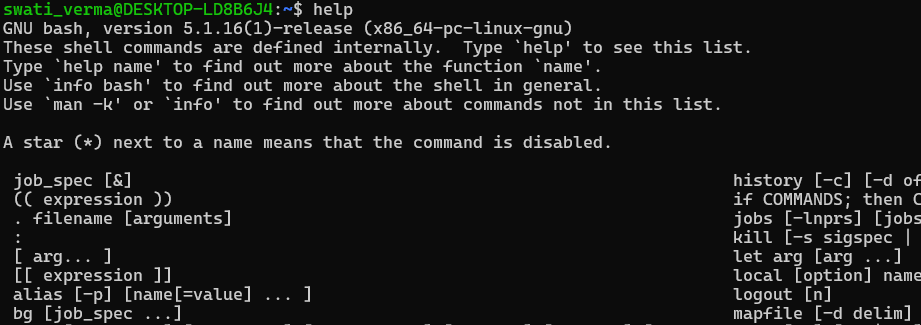
- View Manual Pages - man
man ls
Opens the manual page for the ls command.
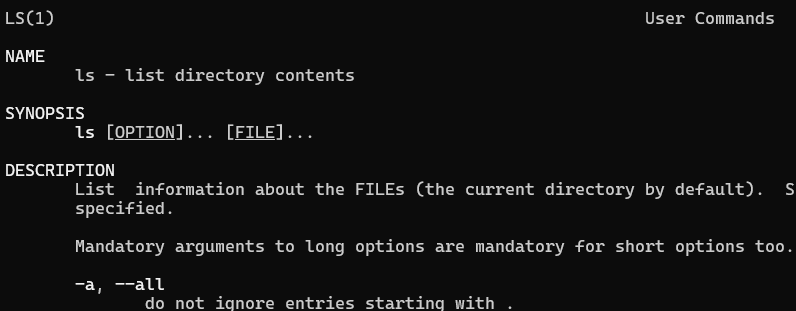
View Command History -
history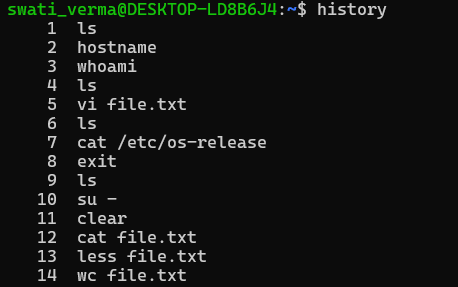
To runs a specific command from history.
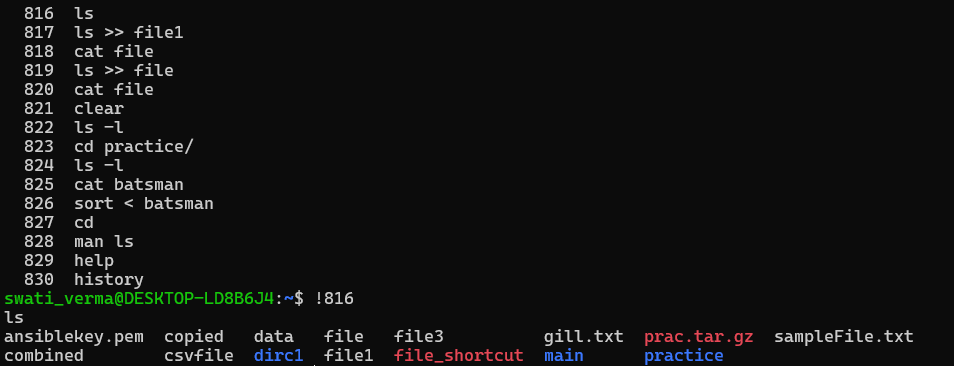
Clears all command history.
history -c
- Checking the OS Release File (
/etc/*release)
- Checking the OS Release File (
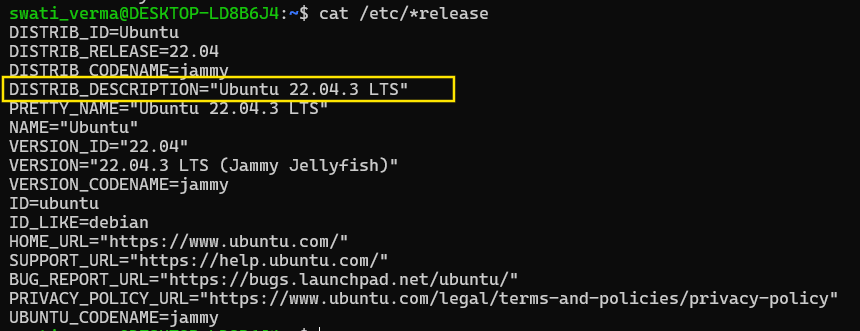
For a quick check - uname-o

For detailed info - cat /etc/os-release

Subscribe to my newsletter
Read articles from Swati Verma directly inside your inbox. Subscribe to the newsletter, and don't miss out.
Written by

Swati Verma
Swati Verma
Growing in DevOps, together! 🤝 | Associate Software Engineer at Tech Mahindra | Enthusiastic about automation, cloud solutions, and efficient software delivery. | Let's connect, collaborate, and learn from each other!